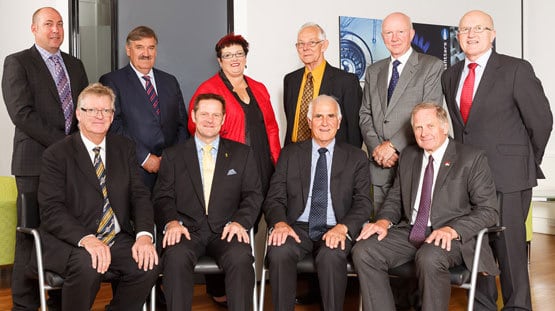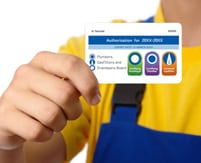Plumbing across the ditch
We asked Peter Jackson, Chair of the New Zealand Plumbers, Gasfitters and Drainlayer’s Board, to paint a detailed picture of the NZ Plumbers Board and the industry as a whole.
The role of the NZ Plumbers Board
The services performed by plumbers, gasfitters and drainlayers have a direct effect on the health and safety of all New Zealanders, their property and the environment.
These services help ensure that drinking water is high quality, that waste water is disposed of in a sanitary manner and that gas installations in homes and other places are safe.
The Plumbers, Gasfitters and Drainlayers Board is the statutory body established under the Plumbers, Gasfitters, and Drainlayers Act 2006 (“the Act”) to regulate these trades and promote the health and safety outcomes that New Zealand wants and needs.
The Board is responsible for administering the registration and licensing systems of plumbers, gasfitters and drainlayers and in doing so, is responsible for setting the minimum standards for registration and ensuring those persons carrying out regulated work are competent.
Broadly speaking, the Board’s powers and functions can be categorised into registration, licensing, competence, discipline and prosecution. The Board receives complaints and, as a result, may investigate and discipline registered persons (including provisional licence holders) or instigate a prosecution in the District Court against those working illegally in the industry, most commonly unregistered or unlicensed persons.
The Board is a not-for-profit body whose operational revenue is derived from fees (such as registrations, licences, examination) and levies on the tradespeople who are registered and licensed. There is no general tax payer contribution to any of its operations.
The Board operates within the building industry framework, including the Gas Act 1992 and the Building Act 2004.
Collaboration with other agencies with interests in building, health and safety, water, gas reticulation, sewage and waste water disposal is crucial to the Board’s effectiveness in achieving its goals.
The Board ensures it works proactively with other agencies within the industry to develop effective regulation, share information, achieve efficiency gains and to design and implement strategies that reflect shared goals and responsibilities.
Industry practitioner statistics
The final licensing figures for the licensing year just passed (2014/15) show there were 3226 certifying plumbers, 1654 licensed plumbers and 1397 apprentice plumbers, 1389 certifying gasfitters, 698 licensed gasfitters, 995 apprentice gasfitters, 2892 certifying drainlayers, 243 licensed drainlayers and 1460 people working under exemption in New Zealand.
The final numbers for the 2015/2016 licensing year will be available from 31 March 2016, and are expected to be similar to the year prior.
The PGDB’s registration and licensing database does not collect gender specific information, however it is estimated that females engaging in the plumbing, gasfitting and drainlaying trades nationwide is currently very low; less than 20.
The number of women working across the construction sector in Canterbury quadrupled between 2009 and 2014 rising from 2400 to 8100. Before the earthquakes, only 9% of the Canterbury construction workforce were women, which was below the national average of 13.6%. By 2014 the figure had gone up to 16% and is still growing.
Many of those women work for the Stronger Christchurch Infrastructure Rebuild Team (SCIRT), helping rebuild earthquake damaged roads, water, wastewater and stormwater networks.
Qualifications pathway
Apprenticeships (now known as training agreements) are expected to take four years. This is for the purpose of ensuring the trainee is exposed to a wide range of installations in building their experience and industry knowledge of their chosen trade/s. The expected end result of an apprenticeship is obtaining the National Certificate.
The National Certificate is gained by the trainee through assessment by an independent training provider, in the specific unit standards relating to each trade.
This system is run by the industry training organisation for the trades.
Once a trainee has the National Certificate he/she is entitled to sit the Board’s first registration level examination, which needs to be passed in order to be entered on the public register as a registered licensed plumber, gasfitter or drainlayer.
A person must also gain a pass in the Board’s highest level examination, another 3 hr exam, to be registered as a certifying person in each trade (1 exam per trade). A person must hold a practicing licence for 24 months at licensed level as well as pass the certifying examination in order to be able to be registered at certifying level.
Basically, once a person has been apprenticed, National Certificate certified, Board examined, Registered – say as a Licensed plumber, hold a practising licence for two years as registered licensed plumber they can then apply to be registered as a Registered Certifying Plumber.
CPD requirements
Undertaking CPD is a condition of a license in New Zealand. Continuing professional development is the means by which registered people (i.e. Licensed and Certifying) maintain their knowledge and skills related to their trade.
The Board is committed to CPD as a valuable tool to assist in maintaining and improving the competence of registered tradespeople, and, as a consequence, to protect the health and safety of members of the public.
A recent newly developed CPD model and partnership with Mico Plumbing & Bathrooms is set to lift the overall quality and consistency of training for tradespeople.
Previously the Board has required a number of CPD points to be obtained by 31 March 2016 each year in order to renew a licence. Points were obtained from courses that were accredited by the Board and form non-accredited (self-directed) learning.
Now, instead of relying on product manufacturers to produce courses that the industry will choose from, CPD training will move to a more resourceful and consistent approach for the next licensing year.
Each tradesperson will now have key topics that they will cover by attending either a half day training course sponsored by Mico Plumbing & Bathrooms branches throughout New Zealand, or by completing the topics on-line. Training content will be developed by skills.
While there were many good aspects of the previous system, there were also a number of problems. In, particular, there were significant variations in the quality and cost of the courses provide. Many tradespeople were critical of the fact that the previous system had developed into a points gathering exercise, and a product forum for some suppliers rather than meeting its purpose of keeping tradespeople competent.
The newly developed CPD model and partnership with Mico Plumbing & Bathrooms that is set to provide training during 2016-2017, will mean a cost reduction for tradespeople. The cost will reduce from approximately $75 per person to $30.
As well as reducing the cost, the new model of CPD and partnership will help ensure the overall quality and success of the new approach ensures the industry stays abreast of key issues, and that there is better overall quality of content delivered.
The new system was developed in conjunction with a stakeholder group made up of industry representatives. On that committee were representatives from tradespeople, suppliers, Master Plumbers, the plumbers, gasfitters and drainlayers federation, and tertiary providers.
Transferring Aussie Qualifications over to NZ
The Board recognises Australian qualifications held by registered plumbers, gasfitters and drainlayers under the provisions of the Trans-Tasman Mutual Recognition Act (TTMRA) 1997 and will issue the equivalent registration.
Australian-qualified tradespeople who wish to apply for registration in New Zealand under the TTMRA can request an application form from the Board.
Rebuilding Christchurch
EQC’s plans to settle drainage claims resulting from the Canterbury earthquake are under way, and they are taking their consumer responsibility seriously within that project. Use of registered and authorised contractor suppliers will be critical to the overall success of the project and EQC will be pushing the Board’s ask-for-the-card messaging.
In supporting the initiative the Board has worked in partnership with EQC to ensure targeted information sheets are available to them for distribution to claimants, and will be actively issuing joint subsequent media release activity during the project stressing the importance of using registered and authorised tradespeople.
New Zealand Building Code and Standards New Zealand
Australia Standards/New Zealand Standards are used in New Zealand, and in some cases New Zealand only clauses apply.
Plumbing, in New Zealand, is required to meet the New Zealand Building Code. In most cases this will be done either by the acceptable solutions outlined in the code e.g. G12 or G13 which can include reference to all or part of an AS/NZS Standard. The New Zealand Building Code is performance based so a plumber is not restricted to only using the NZBC or an AS/NZS or NZS but can develop their own method.
They would however need to be able to demonstrate how their method will meet the performance criteria of the New Zealand Building Code. This would in practical terms show how they either meet or exceed the methods detailed in the Standards or the Code. As this would be a complicated process most people use the acceptable solutions in the Code and or Standards.
A key point is that the methods used must meet the durability clauses of the code so as stated in most cases people stick with the proven methods as outlined in the Code or Standards.
Key trends and challenges
Occupational licensing is currently under review by the government so there may well be change in the way the industry is regulated. The review also means that the completion of the review of the Plumbers Gasfitters and Drainlayers Act 2006 will be delayed until after the occupational licensing review is completed.
Generally the construction sector is strong at the present time but demand for plumbing, gasfitting and drainlaying services varies across the regions.
The pressure for a rapid increase in new residential building in some areas creates a risk of a high volume of unauthorised work being performed.
The strong construction sector may see an increased number of overseas trained people wishing to come to New Zealand. The Board will need to assess the skills of these people so that safety is not compromised on the one hand, and unnecessary barriers to entry are not created on the other.
Costs are an issue for the sector. Costs of education (including both initial trade training and CPD), registration, and licensing are a burden on businesses.
There are a large number of people working within the industry under exemptions. This creates some risks because these people are not subject to any regulatory oversight and are exempt from ongoing training requirements.
The Board is currently undertaking a review of the registration and licensing Gazette notices including the effective exercise of supervision within the industry. This presents an opportunity to make changes that will enhance the competence of the industry.
Key partners within the industry have indicated a willingness to work more closely with the Board. This creates the opportunity for increased voluntary compliance.
Consumer opinion
The public health component of plumbing, gasfitting and drainlaying and their contribution is under recognised by the public, leading to a growth in DIY and unlicensed activities.
There are a number of relationships with other key parties within the wider construction sector (e.g territorial authorities, consumer organisations, insurers, other regulators, retailers) that that have been formed and/or enhanced in order to contribute to the Board’s public awareness objectives.



